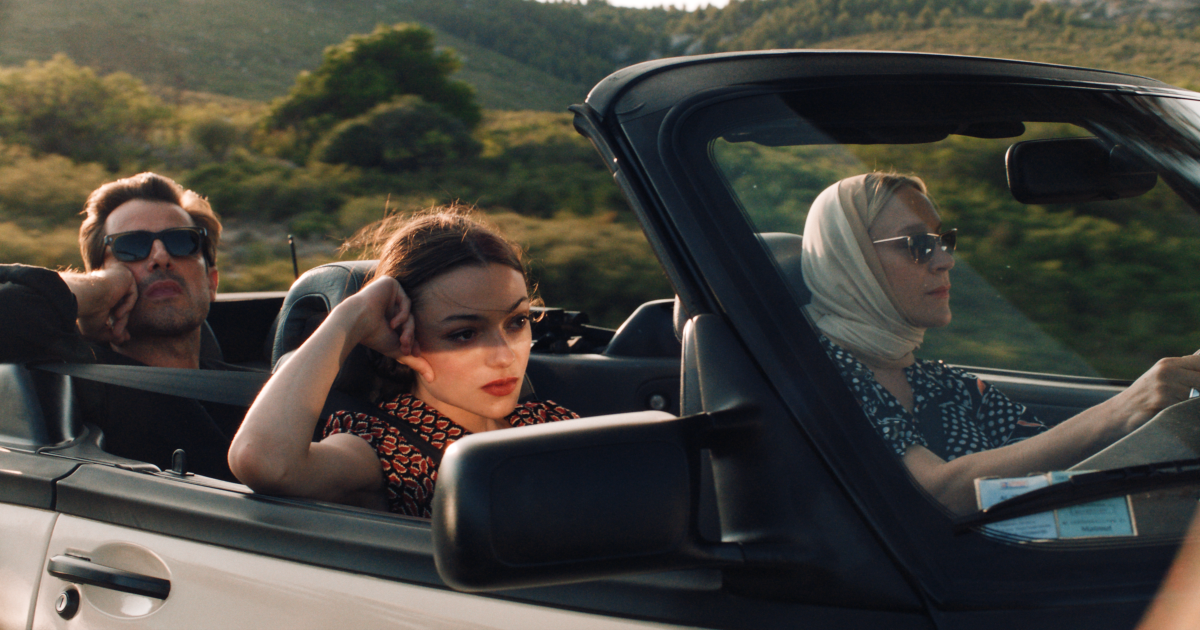The combination of adolescence’s slippery hedonism and the French Riviera’s languid air spurred the explosive popularity of Françoise Sagan’s 1954 novel “Bonjour Tristesse,” written when the author was herself a teenager. Otto Preminger’s 1958 adaptation, pairing the then-scandalous story with a luminous Jean Seberg, Deborah Kerr and David Niven — plus an experimental use of both Technicolor and monochrome — only burnished its appeal, inspiring the French New Wave to boot. Jean Luc-Godard once said he could have dissolved from that movie’s final shot to the opening of his “Breathless” with a simple transitional text: “Three years later.”
Six decades on, though, can a new movie from Sagan’s summer tale capture that same breezy intrigue? In the case of Canadian writer-director Durga Chew-Bose’s confidently composed debut feature, the answer is both yes and not quite. Some backdrops and scenarios are sturdy enough to keep their hot-and-cool appeal and this “Bonjour Tristesse,” with its dreamy seaside luxuriance and attractive cast, makes good use of that familiarity as it mixes vintage glamour with modern details.
But in Chew-Bose’s passion to dig deeper into the circumstances underpinning a young girl’s life-altering cruelty, there’s an over-intellectualization of motive, a need to continually crack the sleek surface of Sagan’s bourgeois characters with self-reflection. It ultimately undercuts a narrative whose strongest suit has always been its briskness.
Under the bluest sky and against shimmering waters, Cécile (Lily McInerny) is having a golden summer, spending quality time with her charming, handsome dad, Raymond (Claes Bang), and his cool, younger dancer girlfriend Elsa (Naïlia Harzoune) at their secluded villa, while enjoying a fling with attentive, good-looking local boy Cyril (Aliocha Schneider).
That dynamic shifts with the unexpected arrival of Anne (Chloë Sevigny), a brittle fashion designer and dear friend of Cécile’s deceased mother. With her pulled-back hair, buttoned-up shirts and long skirts, and a tone with Cécile that’s friendly yet auntie-ish, Anne brings to the frolicsome vibe a cooling maturity, a kind of watchfulness. But also, in the rekindling of a dormant closeness between Anne and Raymond, there’s an imminent future that Cécile isn’t ready for. Could she prevent that from happening and keep her brat summer going?
The novel and Preminger’s film relied on the device that its protagonist was looking back on monumental events from the perspective of that title sadness, so Chew-Bose’s defiantly in-the-moment telling, kissed by Maximilian Pittner’s sun-drenched imagery, feels like a bonus at first. The director also leans nicely into interstitial shots that orient us without attitude, while her choice of music, led by Lesley Barber’s lilting score, is a real mood-setter of romance and melancholy.
But when Chew-Bose reaches for interiority with hyperaware dialogue (democratically applied to every character), something is lost. “She’s imagining what she looks like to us,” Elsa comments to Raymond early on as they observe his daughter like a specimen. Later on, Cécile says to her dad, “Your silence is different — I’m not in on it.” These aren’t lines, they sound like an actor’s notes on how to play something wordlessly.
It’s as if everyone’s a budding essayist on psychology, which makes a situation that trades on recklessness and delusion harder to swallow. Everyone sounds too smart to be prone to error, although Sevigny comes closest, embodying someone in a precarious state of emotional susceptibility, whose obvious intelligence hides unspoken wounds.
There are ways of exposing the vulnerabilities of the wise and/or precocious when navigating matters of the heart. (Éric Rohmer has many fine examples.) But Chew-Bose’s approach eventually feels more clinical than revelatory. One can appreciate the effort behind this well-made “Bonjour Tristesse” without necessarily feeling its turmoil.

